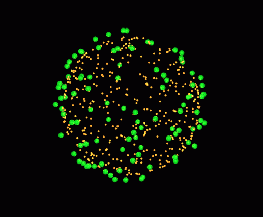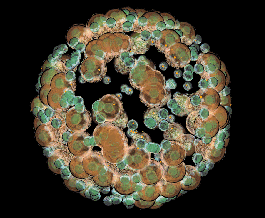

Radio sources such as pulsars and quasars twinkle - referred to as scintillation - due to random variations in the density of interstellar gas between us and them. Jean-Pierre Macquart and Don Melrose take aim at the standard theory.
The twinkling of stars, called scintillation, is due to fluctuations in the density of the air along the line of sight through the Earth's atmosphere. Point-like radio sources, such as pulsars and quasars, also scintillate due to fluctuations in the electron density along the line of sight through the interstellar medium. Scintillation can lead to a change in the intensity of the source, a change in its apparent position, or both. The standard theory for all such scintillation phenomena is statistical - rather than treat every fluctuation in density along the line of sight exactly, the theory relates the spectrum of scintillations (the number of times each variation in the source image occurs) to the spectrum of the density fluctuations (the number of times a fluctuation of each size occurs). However, there are occasional ``extreme scattering events'' (ESEs) in which the intensity of the source varies enormously (several times its average intensity) for typically several months - a long time compared with the usual timescale of variations - before settling back to the usual fluctuations
Jean-Pierre Macquart and Don Melrose are developing an alternate model for scintillations of radio sources based on scattering by discrete structures in the interstellar medium. Their approach was motivated by the thought that the rather large discrete structures required to explain ESEs may be extreme examples of a range of discrete structures common in the ISM. This led to a desire to have a scintillation theory that includes the effect of many discrete structures along the line of sight. They have shown that a distribution of discrete structures can simulate the scintillation spectrum predicted by the standard theory. When there are many discrete structures, the shape of the structure is relatively unimportant, and it is the distribution of sizes of the discrete objects that has most effect on the scintillation spectrum. Unlike the standard theory, numerical simulations using Jean-Pierre's and Don's approach include changes in the phase of the radio wave due to a random collection of discrete objects along the line of sight. Their model also provides a different way of describing scintillations and avoids some of the implicit assumptions of the standard theory. Therefore, it will be useful in helping to resolve some fundamental questions concerning scintillation.


The left hand panel shows a side view of the numerical model used, with a random distribution of spheres of different electron densities between the source (right) and the observer (off the page to the left). The right hand panel shows the observer's view of multiple images of the point source (orange dots). The spheres of different electron densities are transparent in the interstellar medium, but have been coloured here for visibilty.